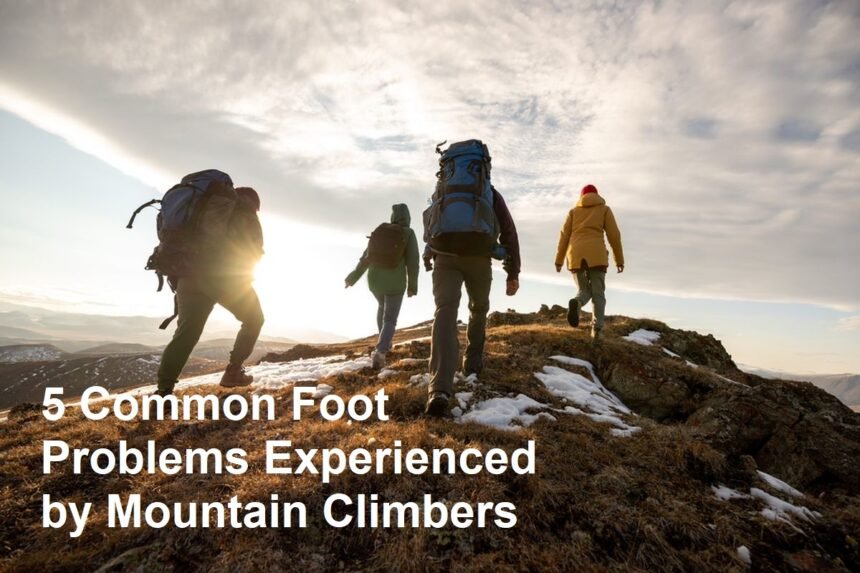Introducing
Mountaineering is an exhilarating and rewarding activity that pushes both mental and physical limits. However, the demands of hiking on rugged terrains and unpredictable weather often put a significant strain on climbers’ feet. Proper foot health is vital for safety, endurance, and overall enjoyment of the adventure. Unfortunately, many climbers face common foot problems that, if ignored, can hinder progress or even lead to serious injuries. In this article, we explore five typical foot issues experienced by mountain climbers and ways to prevent or treat them.
1. Blisters
Blisters are perhaps the most widespread foot problem among climbers. They occur when friction, heat, or moisture causes the outer layer of the skin to separate from the underlying tissue, creating a fluid-filled pocket. Long hikes on uneven, rocky terrains, combined with poorly fitting footwear, increase the risk.
Blisters can be painful and may lead to infections if not treated properly. To prevent blister formation, climbers should wear well-fitting boots or shoes, use moisture-wicking socks, and apply lubricants like petroleum jelly to areas prone to chafing. If a blister develops, it’s best to clean the area, disinfect, and either drain the blister carefully with a sterile needle or protect it with a blister pad to minimize pressure.
2. Cold-related Frostbite and Chilling
Cold temperatures are common in high-altitude environments, and feet are especially vulnerable due to poor circulation and exposure. Frostbite occurs when skin and underlying tissues freeze, resulting in numbness, discoloration, and in severe cases, permanent tissue damage.
To combat cold-related issues, climbers should wear insulated, waterproof boots, layered socks, and thermal insoles. Keeping the feet dry is essential because moisture accelerates heat loss. Frequent movement and blood circulation exercises can help keep the feet warm. In case of frostbite, immediate warming and medical attention are crucial to avoid permanent damage.
3. Toenail Problems and Infections
Frequent changes in elevation and tight footwear can cause toenail injuries such as bruising, ingrown toenails, or even loss of nails. Ingrown toenails develop when the nail grows into the surrounding skin, often leading to pain, swelling, and sometimes infection.
Maintaining proper toenail trimming, wearing properly fitted shoes, and avoiding excessive pressure on toes can help prevent these problems. If infections or ingrown nails occur, it’s necessary to clean the area thoroughly, apply antiseptics, and seek medical advice for proper treatment. Ignoring toenail issues can result in serious infections that impair mobility.
4. Foot Fatigue and Muscle Strain
Extended hiking across demanding terrains can cause foot fatigue and muscle strain, especially in the arch, heel, or ankle. Symptoms include aching, soreness, and sometimes swelling, which can hinder movement or cause instability.
Prevention involves strengthening foot muscles through specific exercises, stretching before hikes, and wearing supportive footwear with proper arch and heel support. Taping or using insoles for additional cushioning can also help reduce strain. Proper rest, hydration, and elevation after hikes are essential for recovery.
5. Plantar Fasciitis and Heel Pain
Plantar fasciitis is a common overuse injury that causes inflammation of the plantar fascia—a thick band of tissue running along the bottom of the foot. It manifests as stabbing heel pain, especially during the first steps in the morning or after prolonged activity.
To prevent plantar fasciitis, climbers should ensure they wear well-cushioned shoes with good arch support, perform stretching exercises, and avoid overloading their feet. If heel pain develops, rest and ice are recommended, along with consulting a healthcare provider for further treatment like orthotics or physical therapy.
Conclusion
Mountain climbing is a physically demanding activity that takes a toll on the feet due to constant pressure, friction, cold, and uneven surfaces. Recognizing common foot problems such as blisters, frostbite, toenail issues, muscle fatigue, and plantar fasciitis is vital for preventing serious injuries. Proper footwear, foot care routines, and listening to your body are essential strategies to keep your feet healthy and support a successful and enjoyable climb. Remember, healthy feet are the foundation for every successful mountaineering adventure!












